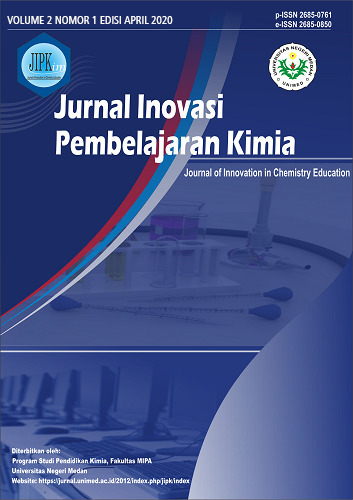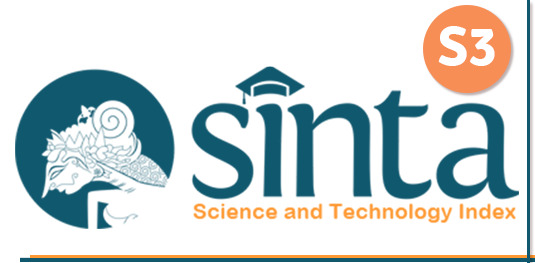KEBERHASILAN BELAJAR SISWA SMA PADA MATERI AJAR LAJU REAKSI MELALUI PEMBELAJARAN BERBASIS MASALAH MENGGUNAKAN WEBLOG
DOI:
https://doi.org/10.24114/jipk.v2i1.17831Keywords:
Model Problem Based Learning, Weblog, Learning Outcomes, MotivationAbstract
This study aims to show: (1) the difference between the student learning outcomes taught by the PBL model using weblog media (PBL-WM) and taught by the same learning model but not using the media (PBL); (2) the correlation between student learning motivation and PBL-WM improvement; (3) differences in student learning motivation based on PBL-WM and PBL. The sample studied was class XI student of SMA Negeri 1 Percut Sei Tuan in the academic year 2019/2020 on the reaction rate teaching in 2013 curriculum. The instrument that used by test (learning outcome) and non-test (motivation). The results showed the average increase in PBL-WM was 74.7; while the average increase in PBL was 62,658. The average student motivation based on PBL-WM was 85.92; while the average student motivation based on PBL was 78.45. The statistical analysis results of SPSS 22.0 at α=5% can be stated that (1) PBL-WM was higher than PBL; (2) there was a significant correlation between student learning motivation and increase in PBL-WM , with a correlation coefficient of 0.925 and the contribution of learning motivation to increase PBL-WM of 85.5% while 14.5% was influenced by other factors; (3) student motivation based on PBL-WM was higher than PBL.References
Azizah, S., Khuzaemah, E., & Lesmanawati, I. R., (2017). Penggunaan Media Internet eXe-Learning Berbasis Masalah pada Materi Perubahan Lingkungan untuk Meningkatkan Hasil Belajar Siswa, Scientiae Educatia: Jurnal Pendidikan Sains, 6(2):197-213.
Chang, R., (2005). Kimia Dasar Konsep-Konsep Inti Edisi Ketiga Jilid I, Erlangga: Jakarta.
Daud, F., & Rahmadana, A., (2015). Pengembangan Media Pembelajaran Biologi Berbasis E-Learning Pada Materi Ekskresi Kelas XI IPA 3 SMAN 4 Makassar, Jurnal Bionature, 16(1):28-36.
Herlinda., Swistoro, E., & Risdianto, E., (2017). Pengaruh Model Problem Based Learning (PBL) Terhadap Hasil Belajar, Kemampuan Pemecahan Masalah Fisika Dan Minat Belajar Siswa Pada Materi Fluida Statis Di SMAN 1 Lebong Sakti, Jurnal Pembelajaran Fisika, 1(1):1-10.
June, S., Yaacob, A., & Kheng, Y. K., (2014). Assessing the Use of YouTube Videos and Interactive Activities as a Critical Thinking Stimulator for Tertiary Students: An Action Research, International Education Studies, 7(8):56-67.
Keengwe, J., Onchwari, G., & Onchwari, J., (2009). Technology and Student Learning: Toward a Learner-Centered Teaching Model, AACE Journal, 17(1):11-22.
Muliawati, D. I., Saputro, S., & Raharjo, S. B., (2016). Pengembangan Handout Berbasis Team Assisted Individualization (Tai) Untuk Meningkatkan Prestasi Belajar Siswa Pada Materi Pembuatan Etanol Skala Laboratorium Smk Kimia Industri, Jurnal Inkuiri, 5(1):37-44.
Nurchaili., (2010). Pengaruh Media Pembelajaran Berbasis Teknologi Informasi Dalam Proses Pembelajaran Kimia Terhadap Peningkatan Hasil Belajar Siswa, Jurnal Pendidikan dan Kebudayaan, 16(16):648-658.
Sartono, S., (2016). Pemanfaatan Blog Sebagai Media Pembelajaran Alternatif di Sekolah. Transformatika: Jurnal Bahasa, Sastra, dan Pengajarannya, 12(1):102-134.
Siburian, T., (2014). Rahasia Bimbel, Jakarta: Pustaka Mina.













